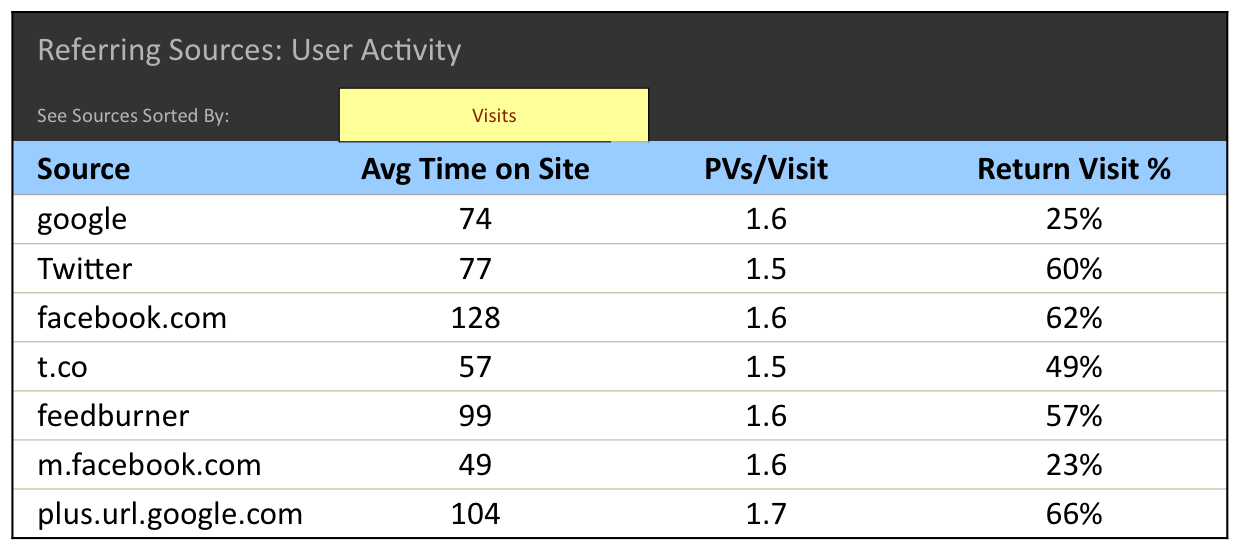
A great user-generated content campaign will increase brand awareness and spark engagement among your audience. It can also generate viral posts, which exposes your audience and new content. 51% of consumers are more likely to engage with a brand when they see it share a tweet. These are some of the ways you can create user-generated material. Create content for your website or blog. Next, share the content on social media. Your audience will be pleasantly surprised to hear your brand mentioned.
TikTok
Although it is not easy to get click-throughs to TikTok user created content, there are many advantages to doing so. This social platform has a massive audience and is growing at an astounding rate, particularly among millennials and Gen Z. You can search for specific hashtags to locate a TikTok user. TikTok’s "For You” page is also a good place for you to start.
Facebook
Facebook user-generated content can be a powerful tool in marketing. Facebook's extensive community of users is a prime location for user-generated content. Its challenging algorithm allows users with large followings to run campaigns on the platform. Facebook users love sharing videos and interactive content. On the other hand, Twitter and Linkedin require more focused content, with strong visuals and more serious messaging.

Instagram
Brands can make use of Instagram user-generated content to reach customers and encourage new purchases. Brands can make it easier for customers to buy by integrating the content with product pages and digital signage. Miappi Monetize is an example of this. It combines user-generated product content from Instagram with product pages. This increases conversion and consumer confidence. The service also allows brands to integrate rights-managed Instagram user-generated content into their creative assets.
Twitter
User-generated content has many benefits. This content can be promoted at a low cost and increase brand awareness among consumers and the general public. It can also help brands gain insight into their audience's preferences as people and general audiences tend to trust branded content. A 68% increase in respondents who saw a branded tweet, compared to 32% who said they would buy a product/service after reading an original UGC tweet. Visual Objects surveyed 401 U.S. citizens.
Copa90
Copa90 used user-generated content (UGC), to cover the 2018 Fifa World Cup. The company enlisted the support of 300 global influencers in order to produce content that could be shared with a broad audience. The network's editorial team will use the content of these influencers to edit and publish videos. By collaborating with BASE Media Cloud and Veritone, COPA90 is working to enhance the AI-driven workflows and intelligent metadata features that are currently available. Copa90's (tm), aiWARE(tm), technology will enable users to apply facial detection and object detection to the content they curate.

LuluLemon's #thesweatlife
LuLuLemon, a Canadian company that makes athleisure clothing, has been achieving amazing results through user generated content. The brand encourages fans to post photos with LuluLemon clothes through social media campaigns. The brand has also used the content created by its brand ambassadors. This campaign generated nearly 947k posts and it continues to grow!
FAQ
How much should I invest in content marketing?
This depends on the number of leads you wish to generate. Depending on industry, the average lead cost is between $5-$10. As an example, 20 dollars per lead was the cost of our first business. Now we spend $6-7 per leads.
Why should I do Content Marketing?
HubSpot claims that "the average person spends nearly 2 hours per day consuming content on social media, in their newsfeeds while reading magazines, browsing the internet, and listening to podcasts. That's a lot to spend time with content!
What is Content Marketing?
A visitor to your site is searching for something in particular. If they find what they need, great! But if not, they'll leave and go look elsewhere. Content marketing helps you provide useful and valuable information that answers questions and solves problems. This content is easily accessible across all channels (email, social media, etc.). You can use this content across all platforms (social media, email, etc.) so that people always have access.
Are there any common mistakes made when creating a content marketing plan?
You must have a plan for your content marketing strategy. Without a solid plan, all your efforts will be wasted time and money. You'll create tons of content without knowing how to use it or where it should go.
A well-planned content marketing strategy gives direction, focus, goals, and helps you reach your objectives. It helps to keep things on track as you move between phases. You might start with analyzing which types of posts are generating the highest engagement rates for social media campaigns. This will allow you to determine which types of posts will drive traffic to your website and which won't. This information will allow you to decide whether or not you want to make a series, blog articles, or videos.
Another mistake people make is not estimating how long a content marketing campaign will be effective. If you are planning to launch a new site tomorrow, it is a good idea to write some content right away. However, if your content marketing strategy has been in place for six months, it's a good idea to start writing new content now.
Great content takes time. This is not something to rush.
You are a business owner looking to learn more information about content marketing. In that case, we recommend reading our guide on How To Create Content That Works, which includes ten steps to follow to ensure that your content marketing programs are effective.
What is content marketing?
This strategy involves creating relevant and valuable content for your blog or website. This content can be text, images, or infographics. It helps to keep customers interested and attract new ones.
How do I measure success in content marketing?
There are many methods to determine the effectiveness and efficiency of your content marketing strategy.
One good measurement tool is Google Analytics. Google Analytics allows you to see the origins of your targeted traffic and which pages they most often visit.
It also gives you an indication of how long each visitor stayed on your site before leaving.
This information can be used by you to improve your content, get people's attention, keep them engaged longer and make it more appealing.
This is another way to determine the success rate of your content-marketing efforts.
Is my email newsletter providing any value to my subscribers? How much of my entire mailing lists have become paid members? How many people have clicked through my landing page? Are click-throughs more successful than other types of conversions?
These are all important metrics to track, monitor, and report on over time.
Lastly, another great way to measure content marketing success is to look at the number of times people share links to your content across social networks.
It's worth starting now, if it isn't already. It could mean the difference between being seen and unseen in your industry!
How many hours per week should content marketing take?
It depends on your situation. You may not need to spend any time at all on content marketing. However, if you want to drive traffic to your site you will likely need to dedicate at least one hour per day.
Statistics
- To further show the importance of this, 89% of people have stopped doing business with a company because of a poor experience. (neilpatel.com)
- Measure your goals with a progress indicator of 0-100%. Make your goals collaborative and transparent (semrush.com)
- Forty-seven percent of buyers view 3 to 5 pieces of content before engaging with a sales representative. (mailchimp.com)
- Companies that use content marketing see approximately 30% higher growth rates than businesses not using it. (mailchimp.com)
- In fact, would pay more for a better customer experience, and 86% of B2B buyers would pay more. (neilpatel.com)
- Progress indicators (0–100%) allow each team member to see how attainable each goal is and understand what remains to be accomplished. (semrush.com)
- According to the Content Marketing Institute, 70% of B2B marketers and 86% of B2C marketers surveyed use content marketing in some form or other. (criteo.com)
- An example of an overarching goal could be: "In 2022, we want to achieve a 20% increase in revenue created by organic content and generate 15,000 MQLs with a budget of $30,000." (semrush.com)
External Links
How To
What are the top content marketing platforms available?
Although no platform is perfect for every industry, most industries have at minimum one preferred tool. Hubspot's software has been proven to improve conversion rates by over 50%. It is therefore widely used by marketers.
Not all tools are created equally. Some offer better analytics tracking, others allow for easier collaboration between different teams, and others offer features such as A/B testing that may improve your content marketing ROI.
Consider the following before you make a decision about a particular platform: What are the pros/cons of each? Is it going to meet my needs right now? What about in two years?
Entrepreneur Magazine identifies the top 5 content marketing platforms.
Marketo Content Studio is the #1 Content Marketing Platform
Marketo is a provider of enterprise social media management software. It offers a suite of products and services, including CRM software, social publishing tools, and analytical dashboards.
They also offer a content Studio that allows businesses access to a range of pre-made templates as well as graphics that can easily be customized.
This means you don't have to spend hours designing new graphics or writing unique pieces of content. Instead, focus on creating content that is relevant to your audience.
Marketo allows you to easily add images and videos to your blog posts. This is one of the reasons Marketo has been so successful. This allows you to make your posts visually appealing and increase engagement with your readers.
Marketo requires that you upload your files to Marketo in order to edit them.
Trello is the Content Marketing Platform#2
Trello can be compared to Kanban boards for project management. Both offer lists of tasks that can be assigned and tracked by users.
Trello allows you to set up individual boards for each team member and give them specific responsibilities. Trello also allows for easy information sharing between employees.
Trello, however, doesn't need any special software to work. It can be used on any device.
Trello also allows you to invite people to collaborate without sharing any sensitive data.
You can also create a private board to share only the essential information to the people who are required to complete a task.
Content Marketing Platform 3: Google Suite
Google offers a variety of products specifically designed for business owners. Google Docs (Sheets), Slides (and many more) are part of Google's G Suite.
This application is not free. You'll need to pay per user. However, if you are planning to use them all for different purposes, several plans start at $5 a month.
To create a new document and embed a link to another website, two licenses would be required.
But if you want to just create one document, it is possible to do so free of charge.
Google tools have the advantage of being compatible with Gmail and other applications. Google tools are easy to use and allow you to email links to documents. You can also store data in Google Drive.
Hubspot Content Marketing Platform 4.
HubSpot is a popular web-based tool for marketing that provides a wide range of functions.
The platform allows users to manage all aspects of their website, landing pages, blogs and other websites. They can also create automated emails and track conversions.
HubSpot is also compatible with Salesforce and WordPress. This means you can connect all three platforms.
HubSpot integrates well with over 200 third party apps. This is one the most attractive features. This allows you to automate processes and create reports based upon real-time data.
Although HubSpot will not allow you to publish content, you are able export it into many formats such as HTML or PDF.
When it comes to pricing, HubSpot offers a free trial version. After you upgrade, you will have unlimited access to everything.
HubSpot offers a variety of solutions, including a blog platform and an eCommerce solution.